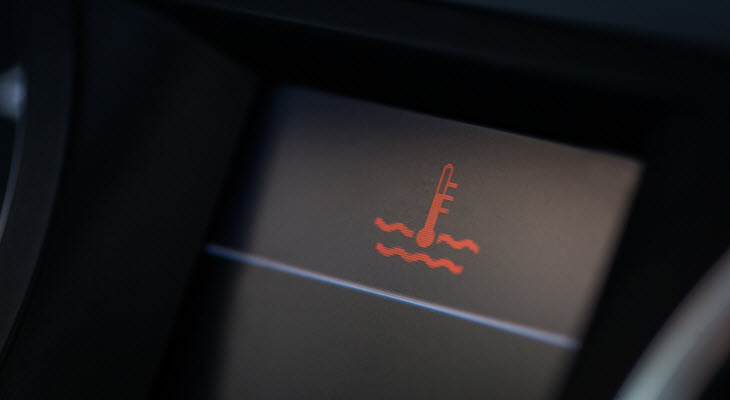


Without coolant, your car is in danger of complete engine failure. This is because coolant prevents your engine from overheating, which can cause your engine to completely lock up. To do this, coolant, also known as antifreeze, circulates around the engine, absorbing heat and lowering engine temperatures. Secondly, coolant protects your car’s cooling system from freezing when the temperature drops. Lastly, coolant helps to safeguard the system from rust.
It goes without saying, therefore, that coolant is an essential fluid for your car and should always be well maintained, particularly in regards to leaks in the system.
Coolant leaks can be broken down into three main categories: external leaks, internal leaks, and radiator cap leaks.
External leaks are the most straightforward and easily noticed type of coolant leak. These occur when there is a leak in any part of the coolant system that results in coolant visibly leaking from your car, such as spots on the ground.
Leaks in the radiator hoses are the leading cause of external leaks. These can be easily spotted by inspecting the hoses. While of course being proactive with maintenance can extend the lifespan of all parts of your car, radiator hoses will start to deteriorate and crack over time, which allows coolant to leak. Another key spot to inspect are the areas where the radiator hoses link to the rest of the coolant system. These connections can be prone to leaks and can be indicated by the swelling and deterioration of the hoses.
The second leading cause of external leaks is the radiator itself. Diagnosing this issue can be a little more tricky than a radiator hose leak, so it is best to rule out this problem first. Discovering radiator issues requires more extensive diagnostic work which usually involves the removal and partial disassembly of the part.
Internal leaks should be investigated after the potential for an external leak has been ruled out, as they require a much more thorough investigative process to get to the bottom of the problem. Internal coolant leaks do not result in the visible appearance of coolant, and instead will seem as though the coolant is disappearing and needing to be topped up frequently.
More often than not, internal leaks are caused by problems with the head gasket of your car. Head gaskets seal off the combustion chamber from the coolant system. They are designed to help create the pressure required inside the chamber for successfully igniting fuel. Over time, head gaskets can become loose because the pressure they need to contain takes a lot out on the part. This can result in coolant being able to leak into the combustion chamber where it can be burnt alongside the fuel, causing a range of negative symptoms.
Similar to the pressure required within the combustion chamber of your car’s engine, your vehicle’s radiator also needs to remain pressurized to allow the coolant to successfully circulate the engine system. Like with the head gaskets, the pressure can cause accelerated wear to the radiator cap, which can result in coolant leaks, and a reduction of pressure in the system. This can also be caused by using an improper radiator cap or a cap which is not secured properly.
The only way to successfully diagnose this problem is to undertake a pressure test at your trusted local auto shop.
Your car’s coolant system is a closed system for a reason. To allow the coolant to perform its vital role, the system needs to retain the correct amount of fluid and pressure. A coolant leak will result in a dramatic decline of the coolant’s ability to reduce engine temperatures, leaving your car at great risk of overheating and subsequent damage.
If you’re a resident of Garland, Rockwall, Rowlett, Sachse, or Wylie, TX, you should bring your car to our team of experts at Rowlett Motorwerks as soon as you suspect a leak. Don’t waste your time poking around your car trying to work out the type of coolant leak you’re experiencing. Instead, leave it to us, as with 70 years of automotive experience we can confidently say that we have seen it all before!
